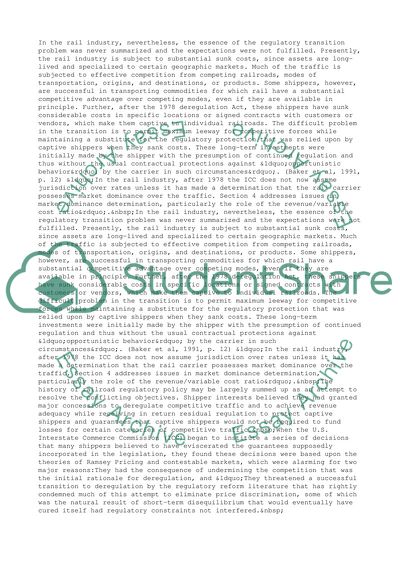Cite this document
(The Transports Regulatory Reforms and the Influence of Market Forces Essay, n.d.)
The Transports Regulatory Reforms and the Influence of Market Forces Essay. Retrieved from https://studentshare.org/business/1504272-transportation-regulation-and-public-policy-by-land-sea-and-air-due-to-the-deregulation-act-of-1978
The Transports Regulatory Reforms and the Influence of Market Forces Essay. Retrieved from https://studentshare.org/business/1504272-transportation-regulation-and-public-policy-by-land-sea-and-air-due-to-the-deregulation-act-of-1978
(The Transports Regulatory Reforms and the Influence of Market Forces Essay)
The Transports Regulatory Reforms and the Influence of Market Forces Essay. https://studentshare.org/business/1504272-transportation-regulation-and-public-policy-by-land-sea-and-air-due-to-the-deregulation-act-of-1978.
The Transports Regulatory Reforms and the Influence of Market Forces Essay. https://studentshare.org/business/1504272-transportation-regulation-and-public-policy-by-land-sea-and-air-due-to-the-deregulation-act-of-1978.
“The Transports Regulatory Reforms and the Influence of Market Forces Essay”, n.d. https://studentshare.org/business/1504272-transportation-regulation-and-public-policy-by-land-sea-and-air-due-to-the-deregulation-act-of-1978.


